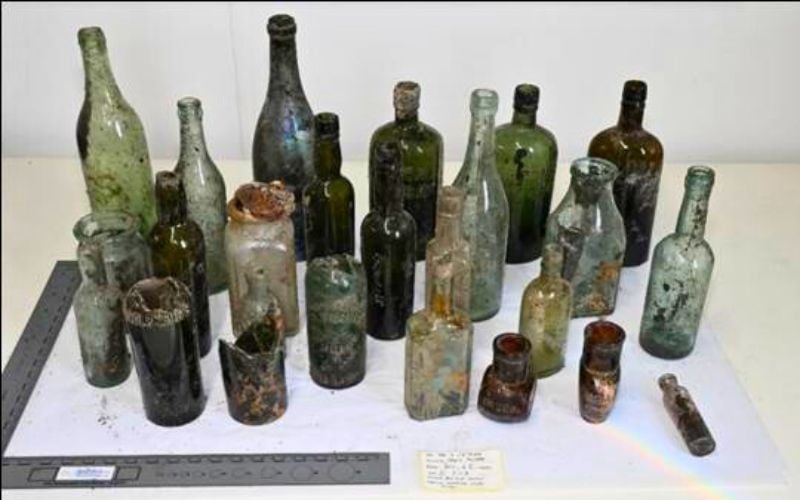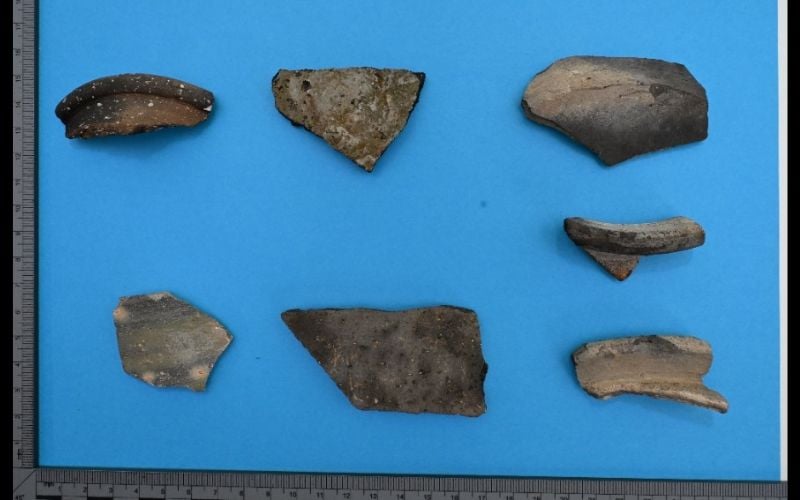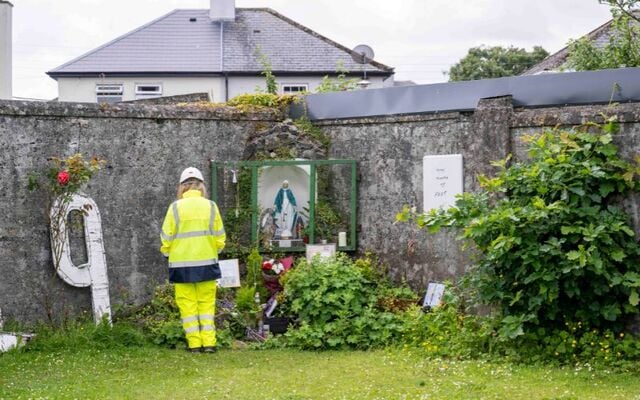The Office of the Director of Authorised Intervention, Tuam (ODAIT) provided a technical update from the forensic excavation at the site of the former Mother and Baby Institution in Tuam, Co Galway, on Friday, August 29.
The update, which covers the period of July 14 to August 22, comes six weeks after forensic excavation of the site of the former Mother and Baby Institution in Tuam began.
In the first six weeks, excavation has focused on two areas: the site of a former workhouse yard (outlined in blue in the picture below) and the high stone boundary wall at the eastern side of the site (outlined in yellow below).

Machine excavation commenced in the former yard of the workhouse, adjacent to the playground to the northeast of the site, while hand excavation was undertaken in the form of Test Trenches abutting the 19th-century boundary wall.
ODAIT said on Friday that its research indicates a low likelihood of human remains being present in the areas referred to above.
Excavation findings to date:
The excavations have uncovered materials from four main eras in the site’s history:
- Post-institutional: 1961 onwards, i.e. the period since the Mother and Baby Institution ceased operating at this site.
- Institutional: 1925 to 1961, i.e. the period during which the Mother and Baby Institution was operational.
- Military: 1918 to 1925. During the War of Independence and Irish Civil War era, the location was used first by the British Army and then by the Irish National Army.
- Workhouse: 1841 to 1918. The building was originally built as a workhouse in 1841.
In both locations where excavations have taken place to date, objects from all of these periods were identified and recovered, as well as objects from earlier ancient and unrelated dates.
In addition, the upper stratigraphy of the site is composed of a modern topsoil closely associated with construction deposits from the 1970s. This highlights the complexity of the site and confirms the ODAIT’s expectations that materials found at the site would date from several different eras.
Notable evidence recovered to date:
Structures
A circular subterranean feature was located. It is consistent with the location of a "pump" from the 19th-century mapping. The southeastern wall of this yard was also identified as the excavation continued west. These were expected in this area as they are indicated on historic Ordnance Survey mapping. Excavation of these features is ongoing.
Material evidence
The Test Trenches uncovered numerous personal items dating from the institutional era, including shoes, spectacles, and glass baby bottle feeders.
The lower soil layers in these trenches contained glass bottles, likely of pre-institutional date, possibly military era, and a chamber pot.
Ancient and unrelated material (medieval pottery) has also been found mixed through the more recent deposits.

Sample of selection of glass bottles recovered in the first six weeks of excavation. (ODAIT)
Human remains
ODAIT expert osteoarchaeologists confirmed that a single fragment of a dissociated human adult tooth has been found in the upper stratigraphy. This is currently undergoing analysis. This recovery is testament to the detailed methods that are being used on the site.
Animal bone
Large amounts of animal bone have been retrieved. Much of this is likely from the institution, military and workhouse kitchens.
All evidence recovered is being photographed, catalogued, and retained by ODAIT.

Ancient and unrelated (medieval) pottery recovered in the first six weeks of excavation. (ODAIT)
About the Tuam Mother and Baby Home in Co Galway
The Tuam Mother and Baby Home was an institution for unmarried mothers and their children. Run by the Bon Secours Sisters, it operated from 1925 to 1961.
In 2014, local amateur historian Catherine Corless was researching the Tuam Home's history when she discovered records showing that 796 children had died at the Home, but burial records could not be found, sparking suspicion of a mass grave at the site.
“Significant quantities” of human remains were discovered at the site in 2016 and 2017.
In January 2021, nearly six years after the Mother and Baby Homes Commission of Investigation was launched, the Final Report of the Commission of Investigation into Mother and Baby Homes was published.
Including the Tuam Home, the Commission investigated 18 homes across Ireland, ultimately finding that "a total of about 9,000 children died in the institutions under investigation - about 15% of all the children who were in the institutions."
The report later states: "There is no single explanation for the appalling level of infant mortality in Irish mother and baby homes."
The report says that "a particular catalyst" for the formation of the investigative Commission "was the discovery by Catherine Corless of the possible burial arrangements for children who died in the Tuam Children’s Home."
Following the publication of the report, the Irish Government offered a formal apology to victims, survivors, and their relatives.
In November 2021, the Irish Government published its Action Plan for Survivors and Former Residents of Mother and Baby and County Home Institutions. Part of the plan was a commitment to "advance burials legislation to support the excavation, exhumation and, where possible, identification of remains, and their dignified reburial."
In July 2022, the Institutional Burials Act became law, allowing exhumations to take place at former Mother and Baby Homes across Ireland. The Irish Government established ODAIT as part of the Act that October, and in May 2023, Daniel MacSweeney was tasked with overseeing the excavations of children's remains at the site at Tuam.
Pre-excavation works began at the Tuam site in June, and the excavation commenced on July 14. The excavations, which are expected to take 24 months to complete, continue.




Comments